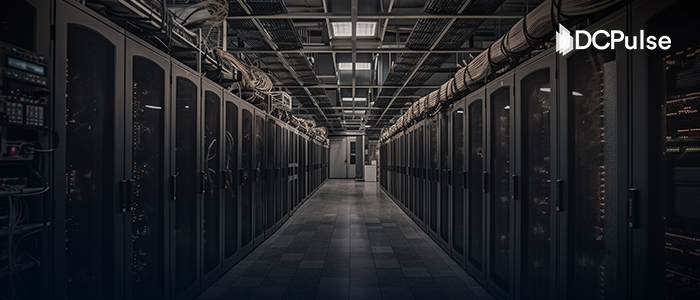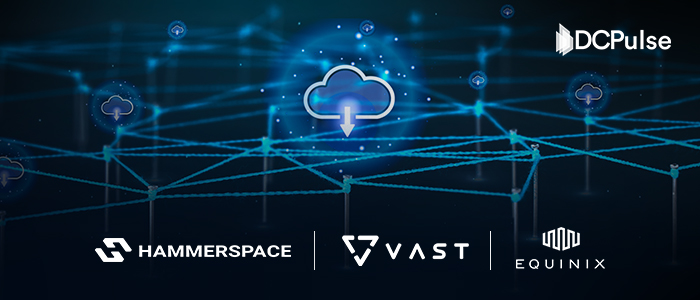Imagine seamless, lightning-fast digital services right at your doorstep, whether you’re streaming a telehealth consult, engaging with an AI-powered classroom app, or supporting critical emergency systems. That vision is exactly what Duos Edge AI, a subsidiary of Duos Technologies Group, is bringing to life.
Having publicly committed to contract 15 U.S.-made Edge Data Centers (EDCs) earlier this year, the Company is now converting those commitments into brick-and-mortar deployments across high-growth and underserved markets.
Duos Edge AI Kicks Off Major Corpus Christi Rollout
On July 10, 2025, Duos Edge AI announced it will deliver two fully configured EDCs to Corpus Christi, Texas, by the end of the month.
These modular, U.S.-made facilities are engineered to offer 100 kW+ per cabinet with N+1 power redundancy, dualgenerator backup, and SOC 2 Type II compliance. Once deployed, they will act as low-latency hubs for mobile operators, enterprises, education providers, and healthcare systems across the Gulf Coast.
“Our Corpus Christi project highlights the speed, precision, and value of our Edge AI model,” said Doug Recker, President and Founder of Duos Edge AI.
Corpus Christi has emerged as a strategic landscape for next-generation infrastructure, driven by its expanding industrial corridor, deepwater port operations, and the region’s growing demand for AI-powered solutions.
The placement of these edge facilities is expected to enable advanced use cases such as predictive analytics for logistics and energy distribution, telehealth delivery across underserved rural areas, smart infrastructure management, and immersive digital education platforms.
Unlike many offshore-built or retrofitted alternatives, Duos Edge AI’s U.S.-made systems offer full-stack integration with rapid deployment and regulatory transparency, positioning the company as a differentiated player in the edge computing landscape.
Looking ahead, Duos Edge AI plans to extend its rollout to other Tier II cities across the Gulf and Southwest, reinforcing a decentralized compute model that meets the rising demands of sovereign data control, real-time analytics, and distributed AI training.
From Ambition to Action: The 2025 Roadmap
This delivery milestone kicks off Duos Edge AI’s broader 2025 expansion plan. Following its earlier commitment to contract 15 domestically built EDCs, the Company is now turning that pledge into tangible progress.
Back on May 15, the Company confirmed its partnership with AccuTech would anchor manufacturing and distribution timelines, shielding deployments from global supplychain disruptions, component shortages, and tariffs.
“We’ve commercially identified at least nine EDC placements and are finalizing real estate and contractual agreements across multiple markets,” Doug Recker explained, underscoring how U.S.-based production accelerates groundbreaking to ‘lights on’ cycles.
What continues to set Duos apart is its ability to compress the traditional infrastructure timeline, from site selection to full operational readiness, into just weeks. With additional deployments already moving through the pipeline, Duos Edge AI is steadily evolving from a technology enabler into a foundational layer for next-generation edge infrastructure
Expanding Digital Equity in South Texas
Just six days after that roadmap confirmation, on May 21 Duos Edge AI activated its first EDC in Victoria, TX, in collaboration with Region 3 Education Service Center (ESC).
Serving 37 school districts across a predominantly rural region, the modular facility spans roughly 4,000 sq ft of prefabricated enclosures, with each rack supporting up to 45 kW of IT load and advanced liquidcooling options for sustained AI workloads.
Built to SOC 2 Type II standards with N+1 redundancy and dual-generator backup, it provides uninterrupted, low-latency access for AI-driven learning platforms, telemedicine, and electronic health records.
The deployment is expected to support digital services for more than 90,000 students and education facilities across the Region 3 footprint, many of whom reside in broadband-constrained areas.
By bringing compute resources closer to end users, Duos and Region 3 ESC are minimizing latency but also enabling more consistent access to critical educational and healthcare applications.
“Together, we’re creating a smarter foundation that helps schools and the community focus on what matters most, educating students,” said Dr. Morris Lyon, Executive Director of Region 3 ESC.
Market Context
The global edge data center market is booming as the demand for real-time processing, 5G connectivity, and distributed AI workloads skyrockets.
In 2024, the market was valued at approximately $416 billion, and it is forecast to swell to $452.5 billion in 2025, a near 8.7 % year-over-year rise driven by enterprise needs for ultra-low latency and localized compute.
North America alone is expected to contribute over 35 % of that growth, fueled by healthcare providers deploying point-of-care analytics, manufacturing firms running real-time robotics control, and public safety agencies prioritizing resilient communications.
Moreover, as AI workloads surge, hyperscale cloud operators are increasingly redirecting burst-intensive training and inference workloads to edge sites to ease backbone congestion and reduce data egress costs.
In response, Duos Edge AI is deploying EDCs within 12 miles of end users, each equipped with dense 90 kW cabinets, modular liquid cooling systems, and redundant network paths. This configuration enables sub-10 millisecond round-trip response times, supporting mission-critical use cases across sectors ranging from precision manufacturing to emergency response.
Competitive Landscape
While Duos Edge AI accelerates its modular deployments, competitors have explored a range of experimental edge strategies, with varying degrees of scalability and commercial viability.
Microsoft’s Project Natick submerged a containerized data center off Scotland in 2018, demonstrating an eight times lower failure rate than comparable land-based tests. However, the research program was concluded in mid-2024 without commercial plans.
Vapor IO and similar colocation providers are retrofitting metro fiber huts with micro data center pods, but frequently face permitting delays and inconsistent power redundancy across jurisdictions.
Meanwhile, NetworkOcean proposed GPU-cooled capsules floating in San Francisco Bay; while the design promised enormous cooling efficiencies, it ran into complex environmental and regulatory approvals, underscoring the high barriers to nontraditional deployments.
In contrast, Duos Edge AI’s EDCs are designed for replicability and speed. Factory-built skid modules arrive with integrated UPS systems, fire suppression, and 24/7 remote hands monitoring. Site preparation requires only a concrete pad and simple utility hookups, enabling “ground to first load” in as few as 90 days.
This production-grade, site-agnostic model sets Duos Edge AI apart from both experimental proof-of-concept and legacy retrofit approaches, bringing scalable edge infrastructure into operational reality.
Early Performance Metrics
Since the Victoria site went live, Duos Edge AI has collected a range of operational metrics that reinforce the efficiency and reliability of its deployment model.
The average time from site selection to live servers now stands at under 90 days, representing a more than 60% acceleration compared to traditional brownfield builds.
Each cabinet delivers over 100 kW of compute capacity, with water cooling upgrades enabling densities approaching 200 kW per rack. Field testing has recorded median round-trip latencies below 8 milliseconds for local AI inference workloads, supporting responsive, real-time applications.
In terms of uptime, the facility achieved 99.995% availability in its first 30 days, enabled by dual-generator backup, N+1 UPS configurations, and full SOC 2 Type II compliance.
These early results have already drawn interest from telecom carriers seeking to densify 5G infrastructure, healthcare providers investing in diagnostic edge processing, and local governments working to strengthen digital continuity for emergency response systems.
Scaling What Comes Next
By anchoring its first two deployments in Corpus Christi and Victoria, and backing them with rigorous metrics, domestic manufacturing, and targeted regional partnerships, Duos Edge AI proves that edge computing can be rapid, reliable, and equitable.
As it marches toward its year-end goal of 15 U.S.-made EDCs, the company isn’t just expanding infrastructure; it’s reshaping how communities access low-latency AI, healthcare, education, and public safety services.
Through U.S.-made modular designs, supply chain resilience, and collaborations across education, healthcare, and municipal sectors, Duos is doing more than building data centers, it is laying the groundwork for inclusive digital access and economic mobility across South Texas and the Gulf Coast.
Each new site reinforces the thesis that digital equity and economic growth go hand in hand with localized compute power.





